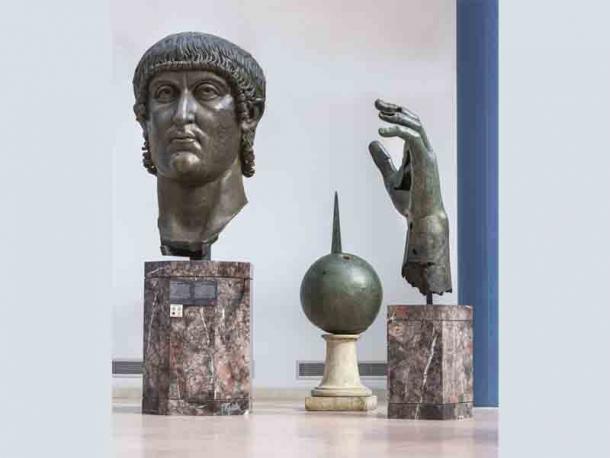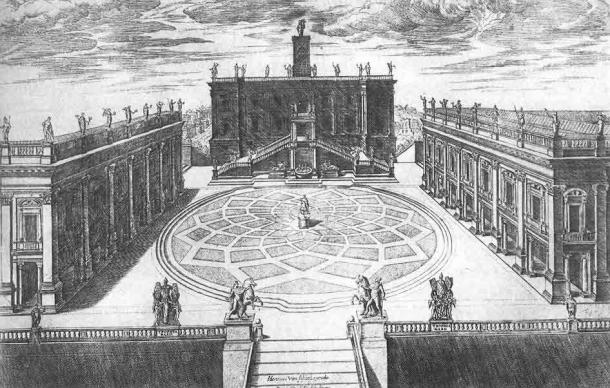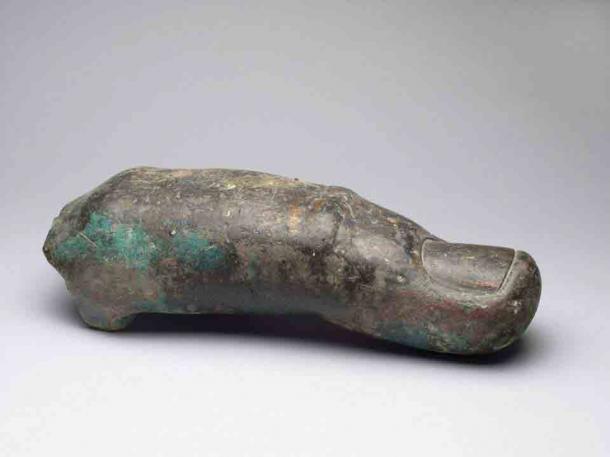After 500 years, the ancient hand on a colossal bronze statue of Emperor Constantine is reunited with its middle bronze finger. In 2010, Aurélia Azéma, a French Ph.D. student researching ancient large bronzes speculated that a huge bronze “toe” kept at the Louvre in Paris might be the missing bronze finger from the remains of an enormous statue of Constantine at the Capitoline in Rome. Using a 3-D model the researcher determined, “It was perfect, like two pieces of a puzzle,” and this was all confirmed in 2018.
In June 2018 Ancient Origins reported on researchers at the Louvre Museum in Paris bringing together the massive bronze finger and the left hand of the famous statue of Emperor Constantine, one of the most famous of all ancient statues from antiquity, which is exhibited at the Capitoline Museums in Rome. Now, the complete hand, reunited with its bronze finger, is on display in Rome, the rightful home of the finger.

Curators reattached the sculpture’s missing bronze digit using a “non-invasive, reversible and invisible system.” (Zeno Colantoni / Capitoline Museums )
Constantine Flicks A Final Bronze Finger To Paris
This week, after five centuries, the long-lost middle bronze finger, which is 38 centimeters (14 inches) long was reattached to the original statue in Rome. The hand and finger are now being exhibited at the Capitoline Museums in Rome and this symbolic reunion represents a “collaboration and synergy between the two cities,” according to Mayor Virginia Raggi of Rome in a video posted on Twitter showing the giant bronze finger being removed from its wooden shipping crate.
In the Middle Ages, according to the Seuso project , only the head of Constantius II (337-361) and his left hand still existed and both were placed on a pillar in front of the Lateran Palace in Rome. The head was given “a gold diadem decorated with gems,” and the left hand was used to hold a globe, symbolizing the emperor ’s expansive power over the known world.

Michelangelo’s design for Capitoline Hill, now home to the Capitoline Museums. Engraved by Étienne Dupérac, 1568. ( Public domain )
Bronze Finger Addition Marks Museum’s 550th Anniversary
The return of Emperor Constantine ’s bronze finger coincides with the 550th anniversary of the Capitoline Museums. In 1471 AD both bronze fragments were acquired as a gift from Pope Sixtus IV by the collection of the Palazzo dei Conservatori on Capitoline Hill in Rome, hence, they can be seen in the Capitoline Museum in the same room where the famous equestrian statue of Marcus Aurelius is exhibited.
When then, did the finger become detached from the hand? In an interview with The New York Times Claudio Parisi Presicce, the director of the Capitoline Museums, said 16th-century etchings show that the index finger was missing then. He added that “no one imagined or ever thought that we would ever find the missing pieces.” When we look at the story of how the toe (later finger) found its way to Paris it becomes obvious that luck played a big role in its recovery.

The missing bronze finger from Emperor Constantine’s colossal statue spent more than a century mislabeled as a toe. Source: (Hervé Lewandowski / RMN (Musée d’Orsay )
Journey of the Bronze Finger
The New York Times article says Giampietro Campana, a Roman art collector and archaeologist who had amassed one of the great collections of the 19th century, took the finger that went to the Louvre in 1863. Campana was accused of embezzlement in 1857 and the collection was seized and sold at the Louvre in 1861. Among the buyers of the artifacts were Napoleon III and Emperor Alexander II, who donated his purchases to the Hermitage in St. Petersburg, Russia.
The finger and the hand were brought together for the first time in 2018 at the Louvre and in 2019 they traveled to the Hermitage in Russia.
Now, the Louvre bronze “finger” has rejoined many other pieces of statues that were donated to the people of Rome by Sixtus IV at the Capitoline in Rome.
And while this story might seem concluded, as Columbo would say, “there is, however, just one more thing.” While it’s known the finger was detached sometime before the 16th century, everyone at both museums is still confused as to how the finger ended up in the controversial Campana collection that was taken to Paris in the first place.
Top image: Constantine’s colossal hand with its reattached bronze finger. (Zeno Colantoni / Capitoline Museums )
By Ashley Cowie
 RSS Feed
RSS Feed















 May 3rd, 2021
May 3rd, 2021  Awake Goy
Awake Goy  Posted in
Posted in  Tags:
Tags: 













